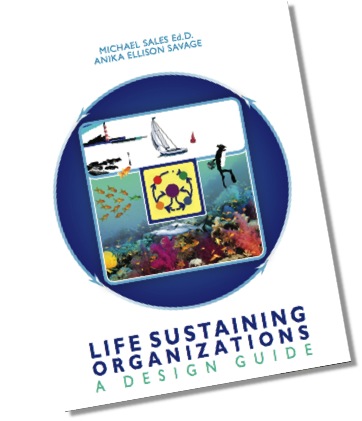Life-Sustaining Organizations
Enriching organizational success
Organizations should be life-sustaining rather than life draining. Those that nourish the people who work in them will be enriched in multiple ways – attracting the energy that sustains and reinforces its continuing success. Ecological thinking is second nature for life-sustaining organizations.
Art of the Future’s approach to life-sustaining organizations integrates the organization’s purpose with it’s places and policies to support rather than inhibit the efficiency, effectiveness and innovation of its employees.
Rapid and dramatic developments are remaking how we work. The technology we utilize continues to evolve at a break-neck pace. The modern office is adjusting to the “work everywhere” approach while ushering in a new generation of employees with different expectations and standards. Today, systems thinkers who explore all facets of sustainability, accessibility, material innovation, and technology shape the design of everything. The workplace is smack in the middle of this massive rethink.
Life-sustaining environments
Organizations that provide a great physical and social environment…
- support the work styles they want and expect of employees
- align policies, management styles and technologies to effectively support accomplishing tasks rather than inadvertently creating barriers
- reflect the organization’s culture; providing a true sense of integration.
- These organizations will find that their employees…
- are engaged and productive; cynicism is truly the exception
- have a true sense of shared mission; together, they can accomplish something meaningful
- love working for the organization whether they come to a specific location every day or often work remotely.
- has power in its industry and markets
- is stimulating but neither easy nor overly stressful
- attracts recruits eager to join
- retains satisfied employees less likely to look elsewhere
- is life-sustaining and life-enhancing.
Life-Sustaining Strategies – When and Why
Life-sustaining strategy is a way of initiating and responding to change in ways that make transitions exciting and engaging for employees and, therefore, successful for the organization. The Life-Sustaining initiative can be implemented at any time. It is most important when effective action is required to successful steer through the rapids of business growth and change. Here are a few examples of such critical junctures…
Life-cycle transitions
– The business has grown rapidly and it time to introduce professional management. You want to do this without a major disruption to the vitality, pride and sense of accomplishment that has characterized the staff’s attitude up to this point.
– Your organization is moving from high growth into a more mature phase. How will you continue to attract the best and the brightest to maintain your competitive edge?
– Your mature business is posed to leap to the next growth curve – betting the business on new products, new markets, new directions, etc.
The innovation challenge
As the external environment in nearly every field continues change rapidly at an accelerating pace, how do you respond? Those organizations that survive and thrive, act with foresight – creatively and dynamically. As a result, they are able to attract and retain scarce talent and maintain growth in sales and revenue.
Creating thriving communities
If your organization is “stovepiped” and/or caught up in turf wars, you are not leveraging the full potential of your workforce. Life-sustaining organizations foster internal networks and positive relationships.
Changing composition of the workforce
The impact on the social system of change in the workforce (size, gender, racial, cultural, geographic, generational, etc.) can be energizing or enervating depending on how the changes are managed. Life-sustaining environments can help organizations build a working environment that employees, customers, community and supplier networks are attracted to, understand and relate to naturally.
On-boarding process
New members entering or existing members leaving affects the organization’s social system. Life-sustaining environments introduces new members in a way that benefits both the new member and the existing system, paying particular attention to the integration of high creatives. It also helps the organization adjust to the loss of key members.
Merger & acquisition integration
The integration of disparate cultures is often poorly executed in otherwise viable mergers and acquisitions. Cultural factors account for most of the failures in M&A activity. Life-sustaining environments can guide the new newly formed entity in truly becoming a whole.
What makes an organization life-sustaining?
An organization that people love to join and hate to leave strikes a finely-tuned balance between four key system forces:
Differentiation and Commonality
Differentiation = reflection of the complexity of organizational issues and environments, specialization
Commonality = shared information, knowledge of how to do, structure that yields common behavior, language, cognition
Integration and Individuality
Integration = shared excitement and commitment to mission, values, sense of purpose
Individuality = freedom of the whole human being to be him/herself in the workplace; an acknowledgment of the whole human being coming in the door rather than a one dimensional view that turns a person into an object
Environmental Initiatives
We are all becoming more aware of the impact that our organizations are having on nature. Organizations that are consistently pro-active stewards of the environment will attract and hold creative talent who share these values.


